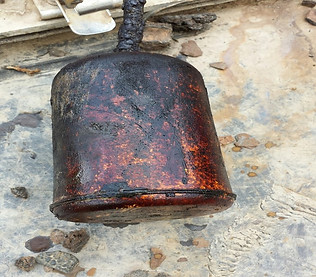
Prevents Carbonate Scale From Forming Via Web Induction Electro -Magnetic Pulse
FlowScience Systems attach to the exterior of all types of pipes and protects pumps from scale build up long term. PVC, steel to dual walled HDPE can all be treated. Non-intrusive to operations and replaces the need for chemicals, acids and jetting permanently when maintained correctly
PREVENTS PROTECTS RESTORES
FlowScience Protects Vital Components of Industry Without Risk to Operations
Conventional scale removal methods can often have dangerous impacts to to the infrastructure of operations
ON LANDFILLS
Physical removal from jetting, pigging, etc. can damage critical piping networks
Chemical addition can severely impact rock packs, liners, pumps and can in some cases negatively effect your waste water treatment
FOR INDUSTRIAL PROCESS PIPING & EQUIPMENT
FlowScience systems can protect costly components and protect the bottom line by ensuring far less downtime and maintenance


AFTER

THE SCIENCE
Treatment Pads attach to the exterior of all types of pipes. The control hub produces a pulsed field that changes the charge of dissolved and suspended solids changing nucleation physics. Dissolved solids become the path of least resistance and form microscopic seed crystals that pass through solution. As a bi-product of the charge; billions of nano CO2 bubbles dissolve existing scale from surfaces. Systems have a typical lifespan of 15 years and continually protect against scale precipitation
.

HOW LSC PIPE TREATMENT SYSTEMS WORK
1
Locate and specify systems type
Utilizing the site and plant drawings and knowledge of where scaling forms we create a design plan and quote. All can be performed remotely

TECHNICAL BREAKDOWN

The FlowScience system uses advanced signal generating technology applied to water via proprietary web induction treatment pads that are attached to piping, pumps or custom designed reaction chambers. This technology produces an electrically generated surface active catalytic effect in water that neutralizes the natural charge of suspended solids.
The technology, in effect, creates billions of available nucleation sites out of the suspended solids in the water that were previously unavailable due to their natural charge. When nucleation occurs, the dissolved calcium carbonate follows a path of least resistance by precipitating as microscopic seed crystals onto the suspended solids that are in solution with it and travelling at the same rate, rather than onto static piping or equipment surfaces.
Dissolves & Eliminates Existing Scale
1. The precipitation reaction previously outlined above transforms the previously supersaturate solution into a lesser or undersaturated solution that has greater ability to dissolve existing calcium carbonate scale and carry it in solution.
2. Descaling can also be attributed to the liberation of dissolved CO2 from leachate solution as CO2 nanobubbles. These nanobubbles have a localized low pH in the range of 4 to 4.5. Physical contact of the acidic bubbles with existing scale promotes a carbonic acid affect that softens existing deposits. These bubbles have little affect on the bulk pH solution

.png)
2
Dropship and Install
In as little as 2 weeks from design finalization systems can arrive on site with OEM for easy custom installation by your personnel
Typical 6" Pipe Treatment Pad Set-up

3
Power up and follow the 6-week monitoring plan
Systems start working in as little as 20 minutes from powering up. Existing scale will break down and will need proper best practice monitoring. Ongoing maintenance is all about keeping an eye on conditions and flow and regular system checks to ensure they're operating

HOW FS PUMP PROTECTOR SYSTEMS WORK
2 Easy Steps
Repels Scale & Keeps Solids "Mushy"
Pump Protector LSC Systems install in a matter of minutes in most cases. Apply scale repelling treatment coils to the exterior of the pump. Apply extreme condition tape. Plug in control hub and monitor.





